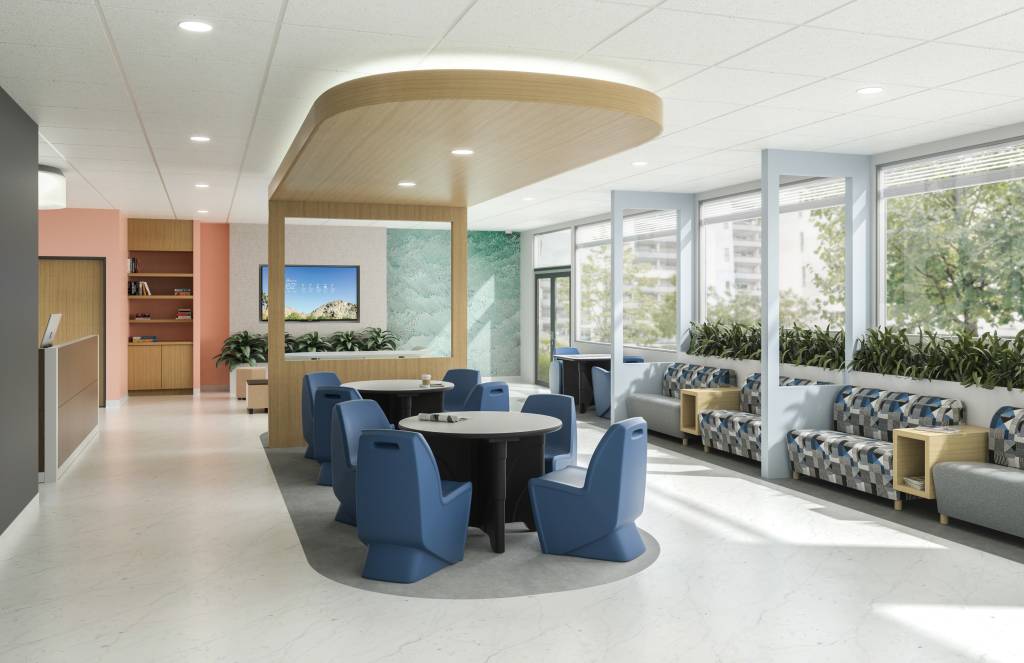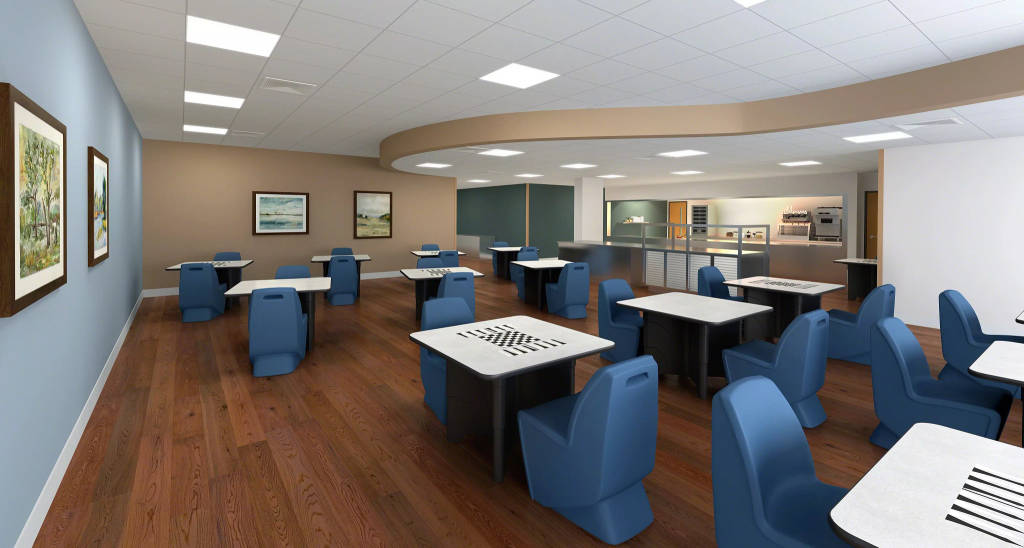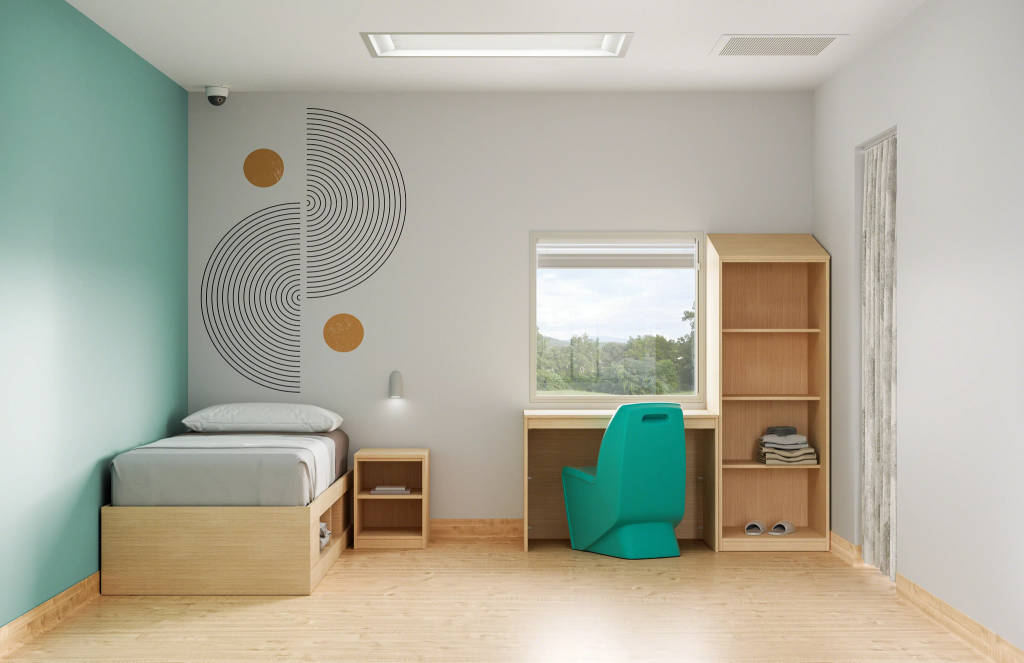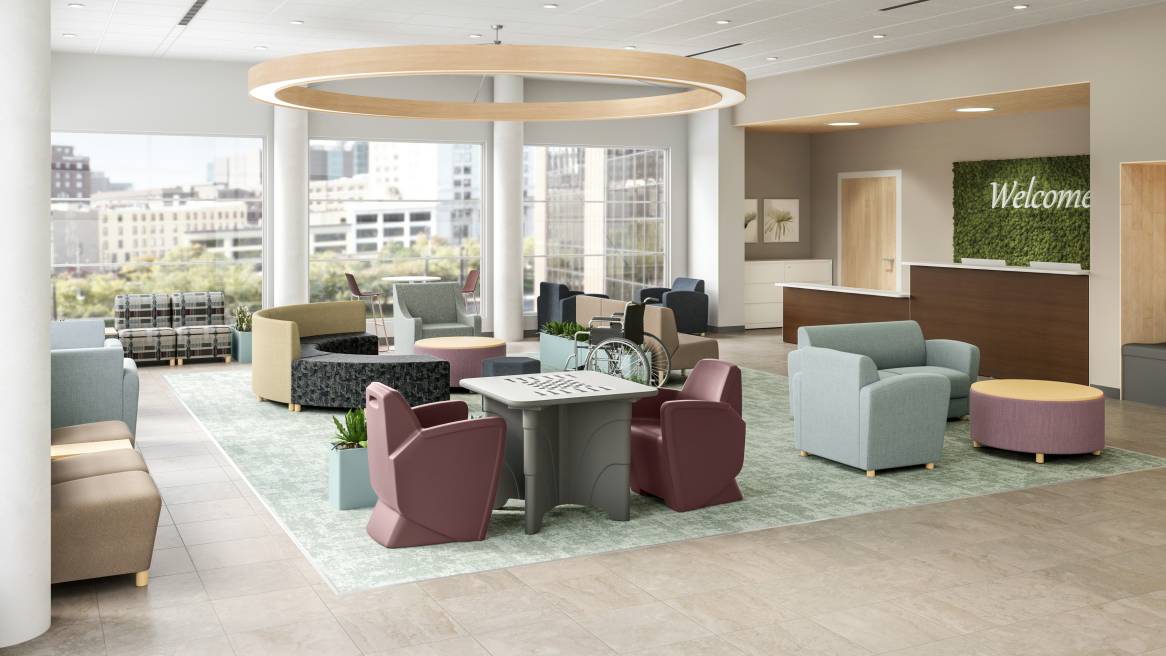Working to Create Warmer, Comfortable + Secure Behavioral Health Spaces
One in five U.S. adults – more than 50 million people – experience a mental health episode every year and more than 11% of children are considered severely depressed (Mental Health America). These alarming numbers have been climbing year-after-year for the past decade – and accelerated since the onset of the pandemic. The need for behavioral health environments is rising, taxing hospitals and treatment facilities, which need more personnel and spaces designed to better support the needs of patients and reduce triggers for stress, fear and anxiety.
Last year, Steelcase Health partnered with ModuForm, a leading health and learning furniture provider, to provide healthcare organizations with greater access to a broad portfolio of healthcare space design solutions that support better healing experiences. Recently, Work Better talked with Joshua Weissman, CEO ModuForm, and Steelcase Health Advanced Explorations manager Seth Starner, about evolving trends, how patient needs are changing healthcare and how the physical environment can help.
Work Better: Why are more healthcare organizations focused on behavioral health today?
Joshua Weissman: People are coming into the Emergency Department in much greater volume with comorbidities where the underlying issue is behavioral and mental. Hospitals are confronted with challenges that they have not necessarily been prepared for as they relate to safety and the security features of furniture, or the built environment. It’s putting stress on the infrastructure.
Seth Starner: Where the mental and physical used to be separate, now the medical community is making strides in realizing it’s about the whole self. The mental and physical are braided. They’re equally important. That’s driving this need to create spaces that recognize and serve that population, and the spectrum can be quite large. The built environment needs to support the staff to manage situations in a way that staff, the patient and family members can remain unharmed.

WB: What factors do behavioral health facilities need to consider when it comes to furniture and space?
JW: It needs to be recognized that there is not a one-size-fits-all solution. An eating disorder facility is helping a much different person than a forensic psychiatric hospital. Yet, there is an underlying engineering and manufacturing methodology and humanizing approach that is important to both. We look at the safety, security and durability characteristics of the designs to match the furniture to the challenge – whether it’s noise mitigation, patient-to-staff interactions, ballasting (adding weight for stability), flexibility, ligature resistance (lack of points where cords or bed sheets can be tied to the furniture), puncture resistance, fluid or pick resistance, or simply the overall ‘stoutness’ of the product. There is also a staff retention and safety component that is critical to keep in mind. The furniture is used daily in what can often be described as unpredictable environments, so we must take all of that into consideration.

WB: Why is furniture and space integral to this evolving approach to behavioral health treatment?
JW: They’re integral because of the unpredictable nature of the environment, not only the physical but demographic. Furniture plays such a critical role in comfort, safety, security and the general wellbeing of everyone. In behavioral health treatment facilities, you serve different needs for different people. For example, age and gender can play a critical role in how a space should be designed. But these factors can present very different challenges. Furniture will be used all day, every day and therefore can have a very positive or negative impact on patients, staff or visitors.
SS: I think about the value of matching acuity levels to furniture and using it as a guideline. There are different levels pre-associated with the types of activity that could potentially occur in a space, and those levels are mapped to furniture options. From a practical standpoint, facility managers can understand the types of scenarios that may play out at their locations, and using these levels, understand almost immediately what type of furniture they need. It allows it to be customizable for everyone – it takes the mystery out of it.

WB: Treating the ‘whole person’ is a major tenant to the modern approach to behavioral and mental health treatments. How is that idea manifested in furniture and space?
JW: While safety, security and durability are incredibly important, we are designing products to be more welcoming too. That said, defining what is welcoming can be subjective. There is an element regarding cleanliness and sanitizing. Can you use cleansers commonly used throughout the facility on the furniture? Are the products easily cleaned and will they look the same in year two and beyond? We are looking at different materials, shapes, and manufacturing processes that will help create dignified spaces that encourage patient-to-staff interactions and a more peaceful and healing environment.
SS: In the day-to-day administration of healthcare, there’s a lot of emotion. It’s an emotional space set in a very scientific environment, so you have this interesting collision between an emotionally-charged event happening in a very clinical space. Those don’t go well together, and I think that realization has become much more tangible to everyone involved – you’ve got to be able to manage that and help people regulate their emotions. The physical environment can be designed to help. This is particularly true of someone who is experiencing a behavioral health issue.
“We need to remember that part of the function of these spaces is to help people get to a better place therapeutically. That is why the furniture needs to reflect warmth, caring and concern. It needs to lack that stigma of institutionalism.”
Seth StarnerSteelcase Health Advanced Explorations manager
WB: Why is flexibility such an important component when designing for behavioral health?
JW: Space is at such a premium. Modular products allow for flexibility in design. In in-patient settings, different activities can require different configurations. With furniture being a central part of the space, having the ability to reconfigure provides a level of independence. If you need more communal activities, you can do that. If you need to set up more private and personal time, you can do that too.
Learn more about the new relationship between Steelcase Health and ModuForm.
Connect with Us
Reach out to one of our healthcare experts to learn more about our insights and solutions for behavioral health environments.


